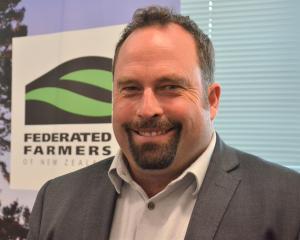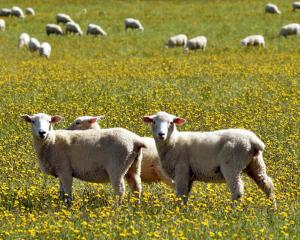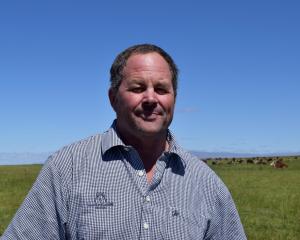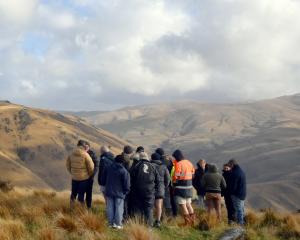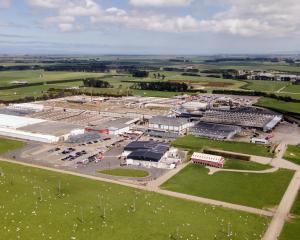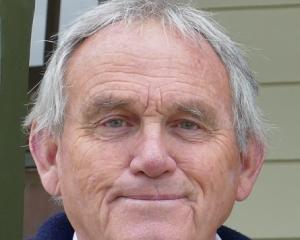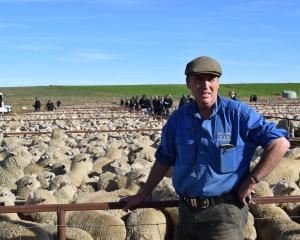
That was the question posed to entrants in the third annual Polson Higgs innovation competition which attracted five entries in the open (young farmer) category and two in the TeenAg section.
Professional development manager David Young said Polson Higgs had a long tradition of supporting innovation and entrepreneurship and was a long-term sponsor of the Young Enterprise Scheme, Startup Dunedin and Audacious, and it wanted something with a rural focus.
The innovation competition was created in partnership with New Zealand Young Farmers and the organisation’s chief executive Lynda Coppersmith was a judge, along with Gresson Dorman and Co partner Brenton Rooney and Tom Hanning, from Polson Higgs’ rural team.
The overall competition was won by Emma Kinney (17), a pupil at Maniototo Area School, and fellow Class Act recipient Zoe McElrea (18), a pupil at Columba College, who won the national Junior Young Farmer of the Year title this year with her twin brother Millar, was highly commended for her presentation.
Emma, who has grown up on a sheep and beef property at Hyde which recently celebrated 150 years of family ownership, said farming was a big part of her life and she was looking at the agricultural innovation course at the University of Otago next year.
Having previously been involved with TeenAg, she was keen to establish a group at Maniototo Area School.
"I think, being a rural school, we do have advantages that town/city schools might not get and this gives huge opportunity to develop passionate young and upcoming farmers."
Her farming background meant she had generated a vision for where she would like to see farming progress in the future, both for her generation and the next that followed.
In her presentation, she pinpointed areas within sheep farming she thought could see improvements which technology would sufficiently offer.
"My main goal was to highlight common issues many farmers in New Zealand are facing, and develop strategies that can overcome these issues and push farming forward," she said.
Emma highlighted two methods being tested recently globally using AI: a camera counting sheep automatically which could be introduced for transporting, saleyards, meat works and on-farm use, and a camera set up in a paddock scanning facial patterns and locations of the stock to match ewes and lambs.
That technology could be used on farms in New Zealand for developing selective breeding programmes and improving genetics for not only stud properties but also general farming practices.
Emma also developed her own ideas around the declining wool industry in New Zealand, saying farmers were desperate to find demand and better markets for their wool which would improve their profit margins.
"Over time there has been a lot of new technologies introduced for irrigation systems, machinery and sheep handling systems. For shearing sheep, blade shearing was the only option until machine shearing was invented in the early 20th century.
"Since then, shearing systems haven’t progressed, which led to my idea of robotic sheep shearing. Mechanical robotic arms that are managed by thermal camera imaging would differentiate the wool insulation from the body heat of the sheep, so that the arms would shear a set distance away from the sheep skin. This capital investment for farmers would cut costs by 50% and increase productivity, while providing less physical strain on shearers."
Emma also suggested using wool to generate fuel to power vehicles. Using new technologies, wool could be processed through alkaline hydrolysis, treating it with sodium-sulphide which would extract naturally occurring keratin compounds.
Those could be broken down into amino acids, and further into hydrocarbon molecules, which could be used to fuel vehicles. The byproducts — traces of nitrogen and sulphur — could be used as fertiliser, she believed.
Zoe said her interest in the agricultural sector was partly due to having grown up on a farm and partly because of her involvement in the Junior Young Farmer competition, which had strengthened her understanding of how much the sector was "full of innovators and people who want to do the best for the industry, the environment and their communities".
"This is something that inspires me, and that makes me understand just how many opportunities there are in the industry for development and growth — both as an individual, and as a country.
"This is very attractive to me, and the reason that I would definitely encourage others to look into agriculture careers if it’s something that interests them, even if it’s just to understand the role that it may play later in their careers.
Her entry was about how AI could be used in combination with and inside new technology to create better farming systems, building and refining the practices that already led New Zealand to be a world leader in agriculture.
"Technology can track more data which can be used to reduce inputs by calculating the needs of crops and animals more accurately, which can improve output.
"The reduction in inputs can also help reduce environmental impact, and tech can monitor our impact on the environment in order to ensure practices aren’t harmful and polluting," she said.
The increased automation using AI of manual and lesser skilled processes helped free up farmers to do work they enjoyed, and to have a better work-life balance.





